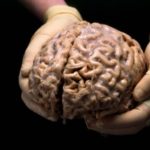Interesting facts about sleep
 When we sleep, our brain continues to work, albeit in the “background” mode, since the subconscious never slumbers. Reliable facts about dreams and dreams are not known much, despite the fact that the phenomenon of sleep has been studied for many centuries. Nevertheless, something interesting on this topic is already known.
When we sleep, our brain continues to work, albeit in the “background” mode, since the subconscious never slumbers. Reliable facts about dreams and dreams are not known much, despite the fact that the phenomenon of sleep has been studied for many centuries. Nevertheless, something interesting on this topic is already known.
Most of the inhabitants of the planet sleep between 20:00 and 01:00 UTC. The peak of dreams is at 01:00 Moscow time – during this period more than 57% of the earthlings rest and see dreams in their beds.
Sleep sensitivity in people depends on the work of the brain region called “thalamus” – it is able to generate impulses that filter out external noises that can awaken a sleeping person.
The Beatles group member Paul McCartney claims that he first heard the melody, which later became a hit “Yesterday”, in a dream.
Some animals, such as cows, horses and elephants, can sleep standing up thanks to the physiology of their knees. Flamingos went even further – they are sleeping not just standing, but standing on one leg. Note that these animals can sleep and lie down when they feel completely safe.
The Hungarian soldier, who received a bullet in the temple during the First World War, survived, but never again was able to fully fall asleep. Despite insomnia, the man felt well and lived for about 40 years.
Hippos can sleep under water – they float to the surface every 3-5 minutes to inhale air, but do not wake up.
People with a mutation of the gene hDEC2 for normal life enough to sleep for 4 hours a day.
Deaf people in a dream can “talk” hands in sign language – just like people without health problems talk in a dream. People born of the blind see dreams without a visual picture, and the dreams of the blind in the process of life are no different from the dreams of sighted people.
Storks, black swifts and dark terns, tired during a long flight, can fall asleep for 10 minutes right in the air.
In London in 2011, they staged the play “Lullaby”, during which spectators settled on beds and fell asleep. The aim of the actors was to arrange them for a pleasant sleep. In the morning, the sleepy theater-goers were fed breakfast, which was included in the ticket price.
The hemispheres of the brain of dolphins and whales sleep in turn, so that animals can surface and breathe during the rest.
The famous artist Salvador Dali often fell asleep, sitting on a chair and clutching a heavy key in his hand. When he fell asleep, the key fell with a loud knock to the floor and woke the painter. According to the artist, after awakening, he easily found solutions to various problems and was filled with new ideas for creativity.
Slightly more than 10% of sighted people do not see colored dreams.
Men often dream of other representatives of the stronger sex, and women – representatives of both sexes in equal parts.
Five minutes after awakening, a person is able to remember his sleep only half, and after 10 minutes – only 10%.
People spend an average of a third of their life in a dream.
Man is the only mammal capable of consciously depriving himself of sleep.
People who sleep less than 8 hours a day tend to have a tendency to overeating and obesity.
After 16 hours without sleep, people’s performance drops significantly.
Some scientists believe in the existence of prophetic dreams, containing genuine information about the future.
People can not see strangers in a dream – they at least once met all the characters of their dreams in reality.
People begin to dream about an hour and a half after falling asleep. Dreams occupy 15-20% of the total time spent in a dream.
The longest dream recorded by scientists lasted 3 hours and 8 minutes. About what was dreamed at this moment the record holder, nothing is known.



























